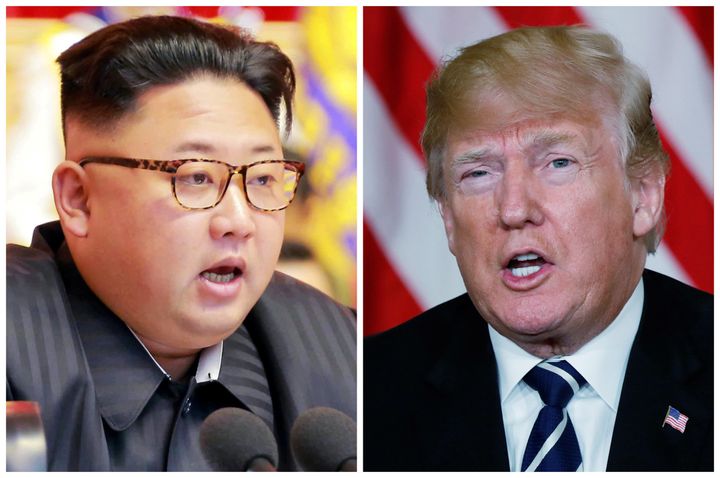North Korea has said it has suspended nuclear and long-range missile tests ahead of a new round of negotiations with South Korea and the United States.
Pyongyang said it also plans to close its nuclear test site, although there was no clear indication if it would be willing to deal away its arsenal.
Leader Kim Jong Un declared the nation’s nuclear force as complete in November after a slew of weapons tests that included the underground detonation of a purported thermonuclear warhead.
North Korea had also carried out flight tests of three intercontinental ballistic missiles.
Some analysts believe Kim is entering the negotiations from a position of strength and is unlikely to accept a significant cut of his arsenal or go significantly beyond freezing a nuclear program.
South Korean and US officials have said Mr Kim is likely trying to save his broken economy from heavy sanctions.
After the announcement on Saturday about testing, US president Donald Trump tweeted it was “very good news for North Korea and the World” and “big progress!”
He also said he is looking forward to his upcoming summit with Kim.
South Korea’s presidential office welcomed North Korea’s announcement as “meaningful progress” toward the denuclearisation of the peninsula.
Presidential official Yoon Young-chan said in a statement that the North’s decision brightens the prospects for successful talks between Seoul, Pyongyang and Washington.
“We no longer need any nuclear test or test launches of intermediate and intercontinental range ballistic missiles and because of this, the northern nuclear test site has finished its mission.”
- Kim-Jong Un
The North’s official Korean Central News Agency said the country is making the move to shift its national focus and improve its economy.
The North also vowed to actively engage with regional neighbours and the international community to secure peace on the peninsula and create an “optimal international environment” to build its economy.
The announcement came days before Mr Kim is set to meet South Korean President Moon Jae-in in a border truce village for a rare summit aimed at resolving the nuclear standoff with Pyongyang.
A separate meeting between Mr Kim and Mr Trump is anticipated in May or June.
The North’s decisions were made in a meeting of the ruling party’s full Central Committee, which had convened to discuss a “new stage” of policies.
The Korean Workers’ Party Central Committee declared a “great victory” in the country’s official “byungjin” policy of simultaneously pursuing economic and nuclear development.
The committee unanimously adopted a resolution that called for concentrating national efforts to achieve a strong socialist economy and “groundbreaking improvements in people’s lives”.
“To secure transparency on the suspension of nuclear tests, we will close the republic’s northern nuclear test site,” the party’s resolution said.

The official news agency quoted Kim as saying during the meeting: “Nuclear development has proceeded scientifically and in due order and the development of the delivery strike means also proceeded scientifically and verified the completion of nuclear weapons.
“We no longer need any nuclear test or test launches of intermediate and intercontinental range ballistic missiles and because of this, the northern nuclear test site has finished its mission.”
Seoul said Mr Kim has expressed genuine interest in dealing away his nuclear weapons.
But North Korea for decades has been pushing a concept of “denuclearisation” that bears no resemblance to the American definition, vowing to pursue nuclear development unless Washington removes its troops from the peninsula.
South Korean scientists have questioned whether the North could continue conducting underground nuclear detonations at its mountainous test site in Kilju in the northeast due to a series of earthquakes that were likely triggered by the activity, suggesting it is too unstable for further bomb tests.
At the height of Pyongyang’s standoff with Washington and Seoul last year, North Korean Foreign Minister Ri Yong Ho told reporters the country could conduct an atmospheric hydrogen bomb test over the Pacific Ocean.